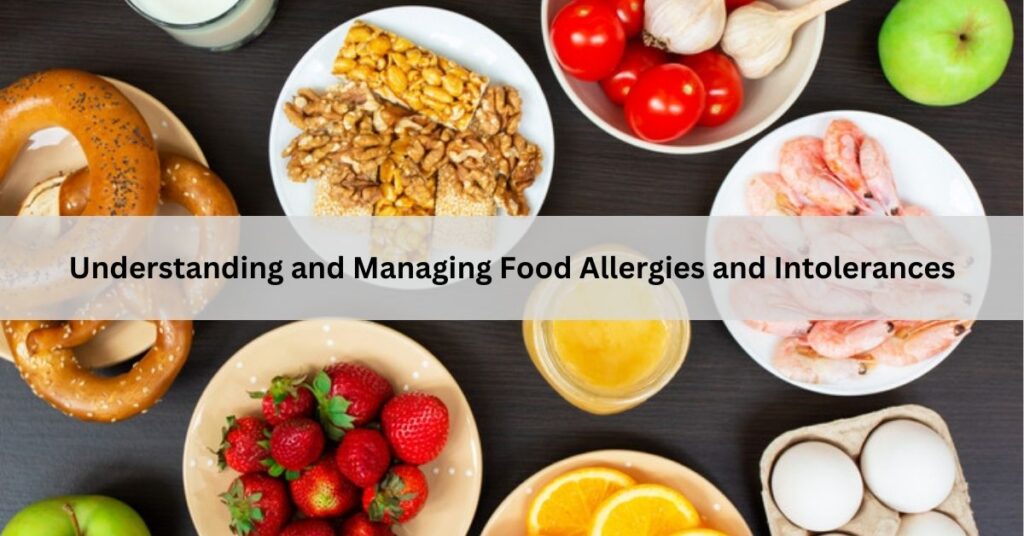Food allergies and intolerances can significantly impact daily life, requiring careful management and awareness. This article aims to provide a thorough understanding of food allergies and intolerances, including their differences, common symptoms, diagnosis, management strategies, and practical tips for individuals affected by these conditions.
1. Differentiating Food Allergies and Intolerances
Understanding the distinctions between food allergies and intolerances is crucial:
- Food Allergies: Involve the immune system’s abnormal reaction to specific proteins in food, triggering allergic reactions ranging from mild to severe (anaphylaxis).
- Food Intolerances: Non-immune responses where the body lacks certain enzymes to digest specific foods properly, leading to digestive symptoms such as bloating, gas, or diarrhea.
2. Common Food Allergens and Intolerances
Identify common triggers for food allergies and intolerances:
- Food Allergens: Include peanuts, tree nuts, shellfish, eggs, milk, wheat, soy, and fish. Allergic reactions can vary from mild skin reactions to life-threatening anaphylaxis.
- Food Intolerances: Often involve lactose (milk sugar), gluten (found in wheat and other grains), and certain food additives or preservatives. Symptoms are usually gastrointestinal and less severe than allergies.
3. Symptoms and Diagnosis
Recognize signs and symptoms associated with food allergies and intolerances:
- Food Allergy Symptoms: Immediate reactions like hives, swelling, itching, difficulty breathing, or anaphylaxis.
- Food Intolerance Symptoms: Delayed reactions such as bloating, stomach cramps, diarrhea, or nausea hours after consuming the offending food.
4. Diagnostic Process
Consult healthcare professionals for accurate diagnosis and management:
- Allergy Testing: Skin prick tests or blood tests (e.g., IgE tests) help identify specific allergens triggering immune responses.
- Elimination Diet: Used to identify food intolerances by systematically removing and reintroducing foods to pinpoint triggers.
5. Managing Food Allergies and Intolerances
Implement effective management strategies to avoid allergens and reduce symptoms:
- Avoidance: Read food labels carefully, communicate allergies or intolerances when dining out, and prepare meals at home using safe ingredients.
- Substitutions: Use allergen-free alternatives and adapt recipes to accommodate dietary restrictions.
- Emergency Preparedness: Carry epinephrine auto-injectors (e.g., EpiPen) for severe allergies and educate family, friends, and coworkers on emergency procedures.
6. Nutritional Considerations
Ensure balanced nutrition while managing food allergies and intolerances:
- Dietary Guidance: Consult with registered dietitians or nutritionists to create well-rounded meal plans that meet nutritional needs while avoiding trigger foods.
- Supplementation: Consider vitamin or mineral supplements if dietary restrictions limit nutrient intake.
7. Lifestyle and Psychological Impact
Address the emotional and social aspects of living with food allergies and intolerances:
- Education and Awareness: Educate family, friends, and caregivers about the condition to prevent accidental exposure and promote understanding.
- Support Networks: Seek support from online communities, local support groups, or counseling to cope with challenges and share experiences.
Conclusion
Navigating food allergies and intolerances requires awareness, vigilance, and proactive management. By understanding the differences, recognizing symptoms, seeking proper diagnosis, implementing effective management strategies, and prioritizing nutritional balance and emotional well-being, individuals can effectively manage these conditions and lead fulfilling lives. With support from healthcare professionals, family, and community resources, individuals with food allergies and intolerances can embrace a lifestyle that prioritizes safety, health, and quality of life.

















